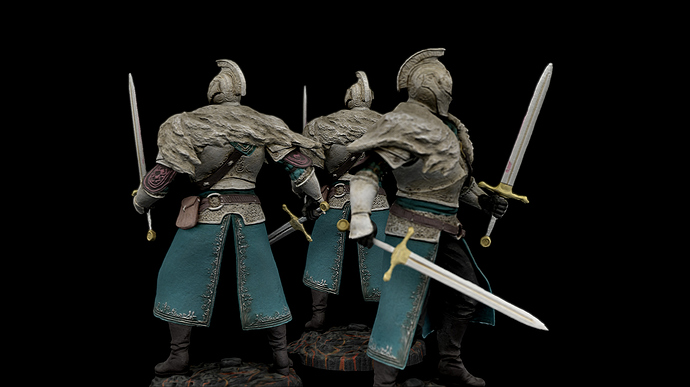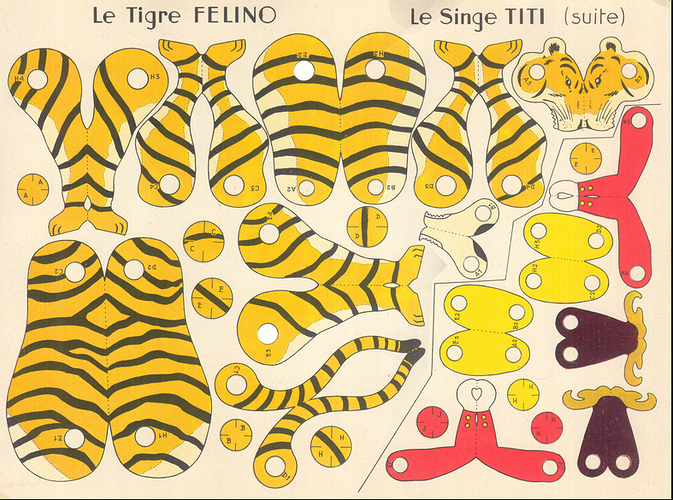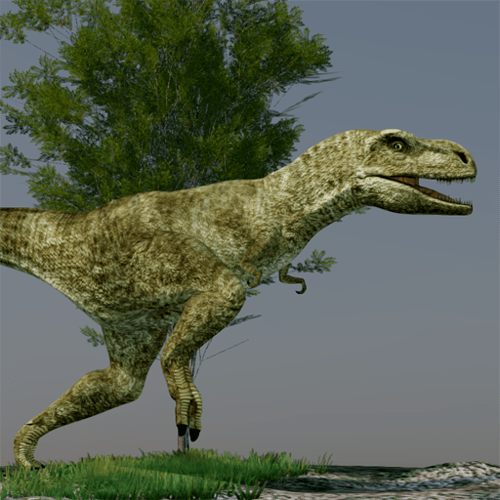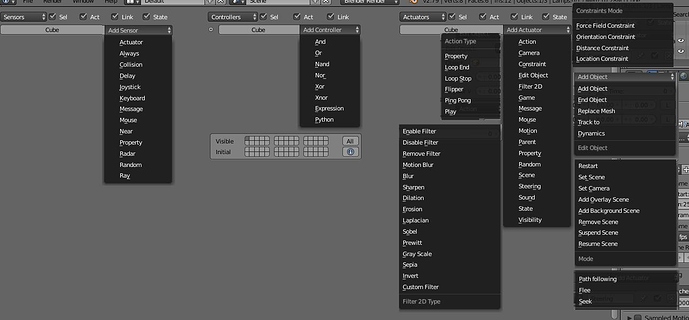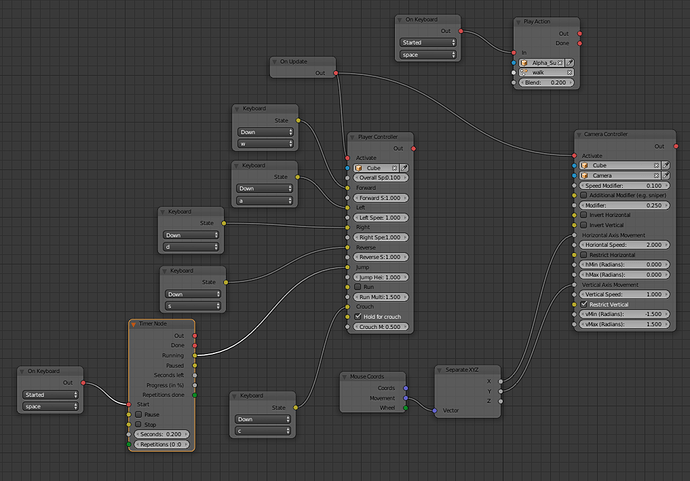That is brilliant! How do you do that? Is that in BGE?
@Jano3D It’s all opinions for sure, data points isolated and what not, but hey if it works for you.
You’re not limited in code and that’s the best scenario and the reality at this point.
This is BGE
Can somebody show me how this would look like in Armory with highest graphical settings, please? Thanks <3
A similar screenshot would be cool to have direct Armory comparison.
Model + Texture: https://drive.google.com/file/d/13ZGsOyfi-NNIgOQpoGTiunoqQ-I4DVhy/view?usp=sharing
Used a bit different light setup (hemi lamps are not supported). Also the textures are suboptimal since they are just diffuse, and the model itself is very highpoly. But Armory manages it pretty good.
All done in Blender, I was reluctant to learn Blender 5 years ago, its not artist friendly. I use Carrara & Hash: Animation Master, though I bought BGE but never use it because my intention is web based 3D.
Simply put, extruding blank geometry is blind modeling and program standard is rigid, it will never be perfect, then created retopology adding more work to the process. Think paper cut out craft, model your mesh in a single flat UV projection and you can modify however you like switching between the “UV mesh” and the actual “model” using shape keys, the result is 100% seam match.
Here are two versions of different render engine, I can do various interactions easily with the low quality one and stuck at logic node in Armory:
http://1catalogue.com/1ofakind/publication/3D-interactive.html
http://1catalogue.com/1ofakind/publication/Trex-armory/index.html
Thank you very very much Simonrazer!
Your light setup is much more better than mine. In general BGE is a little bit poor when it comes to lighting, in my opinion. Oh yes - I’m sorry for the unilateral texture and the excessive polygonal model. I’ve found the warrior as a free 3D scan on “Sketchfab” - I use this page as rapid prototyping library for assets. I can recommend this website to everybody, very useful.
The model itself is a photogrammetrical scan of 435 photos and I must admit I don’t cleaned and optimized the mesh yet, sorry for that.
Therefore I love to see that Armory can manage this model without any problems, thanks for the video.
When I start BGE’s standalone player with this model I reach 60fps, but if I adapt some custom filter-scripts like - Sharpen, SSAO, HDR, DoF - the frames drop by half and I don’t wanna need to have a NASA computer to run my games…
I meant the UV scramble, not 3D itself, been doing that for over 17 years now  But that UV scramble thingy in BGE would be awesome to help not getting my assets stolen.
But that UV scramble thingy in BGE would be awesome to help not getting my assets stolen.
When it comes to lighting, just use and hdr, lol. the ones on poliigon are pretty good.
Why BGE any different?
You can destroy the essential part of the UV mesh just by using shape key, capture existing texture and re-project. Just keep in mind that geometrical texture must retain either vertical or horizontal orientation so that pixels line up otherwise angled uv mesh island will blur the texture in low res.
Asset security is a huge issue in general I think.
I. BGE always has had a fundamental problem when it comes to offical game publishing. I heard about a barrier of the Blender license itself. If you create a game via Blender you will get a project-file called e.g. 方法 / 汉ЮЩфФжЙЗ .blend. You have your textures, sounds, etc. If you buy texture/ sound-packs there is often the term that these elements are not allowed to be in an open folder or shared. You use the Blenderplayer-exporter to create a standalone-executable file for desktop gaming from the original .blend-file. The resulted .exe-file encrypts all textures and sounds in a certain way. In this case you protect the requirements of the packs but the blenderplayer has to follow the GPL license. GPL commands that all textures/ sounds have to be open for every user when you sell your game. If you publish the .exe you need to deliver the .blend file also. This contradiction forces a collision of pack-security (closed) vs. GPL-license (open).
Therefore somebody programmed the so called :“BPPlayer” - You load you packed .blend-file in the program and finally the BPPlayer creates the .exe (standard) file. The .blend file and the BPPlayer are both license-free so there is no issue about that - you can choose any license. You still use the blenderplayer, but only to play the game and not to process the textures and sounds. The file-encryption itself was done by the BPPlayer.
I don’t know how “Armory/Kha/Haxe” creates their executables source code-sided but it would be cool to have the opportunity to choose some sort of encoding standard. Some sort of military encryption algorithms. If you create your own indie triple A game. I called the method: “ARMORY-ARMOURED [AA]”
 - maybe some add-on.
- maybe some add-on.
II. There is some software which rips the model directly from the graphics API of the game. I don’t know what the software does in detail, but this can be a problem - despite you encrypted the texture separately. Solution: Armory-Armoured for Graphics API?
III. If I’m really hardcore and I want any game-model I could use a 3D-scanning software for photogrammetrical analysis. I play the game, rotate the camera around any model and take a photo each frame. Therefore it is imperative to create dynamic objects. A character which is moving all the time. An act of breathing in and out or some clothes blow in the wind. The software use some kind of pixel tracking to create a 3D mesh via vector algebra. If your assets are moving all the time there is no chance to get a clean mesh.

Gutted out from the software.
It’s a big issue here and over in the BGE forum about Logic Bricks. All that Armory has to do is create some node groups that emulate the functionality of the sensors and actuators in the short term and acceptance of Armory will go through the roof.
I compiled a little list of nodes and bricks that act almost the same. I do not have a lot of experience with BGE, so strange Bricks like “Steering” and “Camera” are unknown to me, so you probably can still do them in Armory with some more nodes.
The nodes are arranged in the same order as the bricks, where more than one node is found and they are connected the connections are necessary to work more like they do in BGE and where they are no connections and they are on the left/right of another these are alternatives that also act like the Brick but a little different. The 4 gate nodes on the left are all separate, would have been too long of a list if they were not a little side by side. Also these 4 gate nodes need to be activated by “On Update”, forgot do add that.
Unfortunately most of the Controllers are missing, would be possible to build them with more nodes but it would look very messy. But it is definitely possible to write them in Haxe and add them as new nodes to Armory.
Also I made a “Look” node, which is the equivalent to the Mouse->Look brick in BGE. It is currently in logic_pack if someone wants it.
You’ve missed a whole lot of bricks that have multiple sub-functions (e.g. edit object and constraint) but it’s a worthwhile exercise. I’ll watch with interest as things develop.
edit: I was wondering if you could do something similar with Blender using Animation Nodes? Obviously it wouldn’t be exportable as a game but the logic would be the same for people wanting to do simulations.
made some test projects with animation, glad that it works,
here’s a staring point for you 
with logicpack controllers:
wasd_logicpack_profiles.blend (2.8 MB)
with normal nodes:
wasd_profiles.blend (2.8 MB)
…edit: added renderprofiles
I don’t know, I got a feeling we’re looking at the Logic bricks through rose colored glasses. In my humble opinion, I hated them. They where not intuitive, nor where they user friendly to use. You couldn’t group logic, nor easily reuse, re-organizing was a nightmare, and anything beyond a simple set up became a confusing mess of constantly having to reverse engineer just to remember what was done the day before.
Lets not fear the unfamiliar and pine for the good ol days, because they really were not so good.
While I don’t fully get how the node system works, I’ve used other node based software and feel very comfortable with the work flow. I find it logical, and something I can easily follow visually. So happy this is a part of the Armory. I hope they keep the development of this coding choice going.
Yeah, as someone who hated the experience of trying to figure out coding (be it Python, Godot’s scripting language and more) I loved logic bricks. I loved how easy it was to pick up, string together a couple of things and get something basic working. That said, the moment I got my first game to the point where it was nothing more than jumping on a couple of animated enemies, I found that logic bricks got nightmarish. I would often have to string together chains of things by setting up signals or variables, and then iterating through a bunch of steps, each visible only one at a time. I got used to it, and pushed the BGE further in my games than they really should have been pushed, but it drove me crazy not being able to just look at the whole logic tree at once because it had to be split up into distinct groups of three bricks.
I’m new here, but as a non-coding artist, I’ve so far found the log nodes system vastly easier than Godot’s visual scripting nodes, and at the same time, vastly more powerful and straight forward than BGE’s logic bricks. There’s still some questions and some node settings I’d like to see (global/local co-ordinates toggle on all nodes that translate/force/impulse), but the foundations look great. Holy cow it’s nice to have a real renderer that doesn’t choke with over 4 skinned characters / 20,000 polys onscreen, too…
They are lot better in Armory (Blender) than Godot (Godot looks outdated and too limited , while they are not very supported).
@simonrazer – this is great – thank you so much – works great – one question, is there a way to slow down the Z rotation of the camera, its a bit fast for what I am trying to do (architectural vizualization)
thanks
TIM
